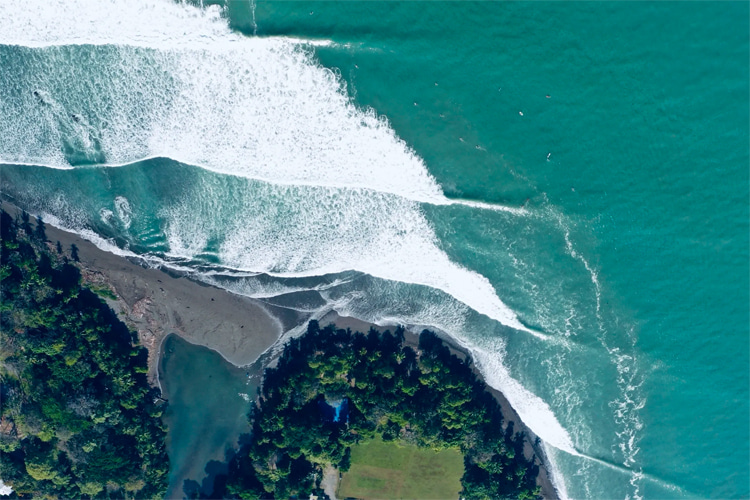It's one of the most beautiful surf breaks on the planet. Meet Pavones, one of the longest left-breaking waves you'll ever witness.
"Bienvenido a Pavones y a la Pura Vida." This could very well be the welcoming sign greeting foreign visiting surfers to one of Costa Rica's premier waves.
"Pura Vida" is an expression and concept that resonates deeply with the people of Costa Rica.
Directly translated, it means "pure life" in Spanish. However, its significance goes beyond a mere translation.
In the Central American nation, "Pura Vida" embodies a way of life, a philosophy, and an expression that encapsulates the country's culture and ethos.
It's a bit like Hawaii's Aloha spirit.
Costa Ricans (Ticos) use "Pura Vida" in various contexts that can mean anything from "hello" and "goodbye" to "everything's cool" or "all is well."
It's a versatile phrase that expresses contentment, peace, and gratitude.
But it's also a way of life and the country's strong ties to environmental conservation and the appreciation of nature's beauty.
Pavones mirrors everything "Pura Vida" embodies. And through a surfer's mind, it's beauty at its purest form.
The name of the memorable Costa Rican wave is the plural of "pavón," in English, "peacock," which used to be a common bird in the surroundings.
It's also the name of the small, laidback surf town that hosts the iconic wave in the Punta Arenas region.
Costa Ricans love wave-riding so much that they even celebrate October 19 as the national surfing day.
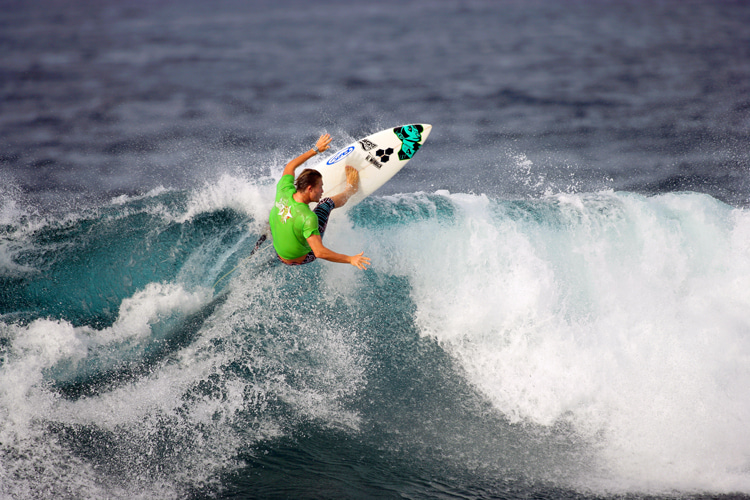
A Geographical Wonder Wave
Pavones sits comfortably at the southern extremity of Costa Rica, nestled in the Gulf of Dulce's embrace as if welcoming with open arms the magical South Pacific south and southwest swells.
The gulf itself serves as a natural partition between the famous Pavones lefts and the Matapalo rights over on the Osa Peninsula.
The surrounding thickets of rainforest, a testament to Costa Rica's renowned biodiversity, cloak many other secrets waiting to be explored.
When Christopher Columbus first set foot in Costa Rica, he was enraptured by the warmth of the locals and the abundant wealth of the land.
Overcome with this beauty and promise, he christened the region the "Rich Coast" or "Costa Rica" in Spanish.
Even amidst the wildness of Central America, Costa Rica has always stood apart.
Especially in the 1970s, while other countries faced political unrest, Costa Rica's stability was its unique selling point.
Not that it promised absolute safety. Adventurous surfers still braved threats from snakes, sharks, and disease.
However, the chances of encountering bandits or corrupt army officers were significantly slimmer.
Notably, Costa Rica remains a nation without an army, a testament to its peaceful character.
Ridden Since the 1960s
Pavones has been attracting global surfers since the late 1960s.
Its allure isn't just about the perfect waves but the adventure involved in reaching them.
Pioneering days of the early 1970s evoke memories of ardent explorers hacking through dense rainforests, paddling across rivers, and hitching rides down obscure trails to find these majestic waves.
But there's a central figure in the story of Costa Rica's most famous wave.
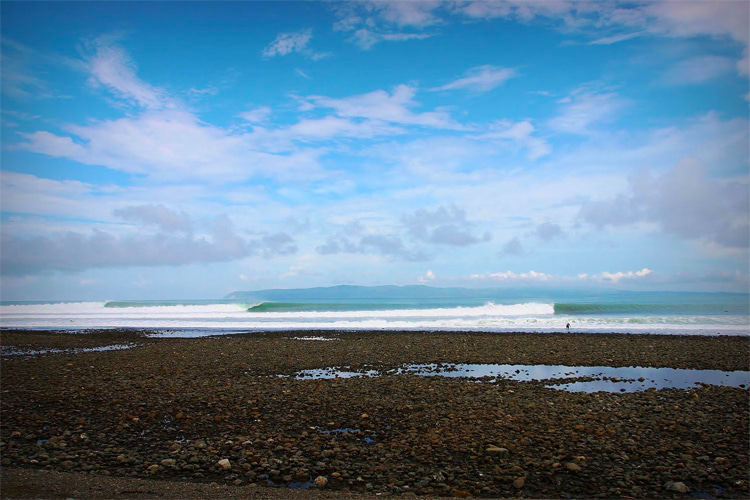
The Story of Dan Fowlie
In the 1970s, Dan "Danny Mack" Fowlie, an American, discovered Pavones and was among the first to recognize its potential as a world-class surf destination.
Recognizing an opportunity, Fowlie began buying land in the area, eventually owning a significant portion of it.
Under his guidance, the sleepy village saw improvements in infrastructure, including roads and public utilities, and he also invested in local businesses.
However, Fowlie's endeavors weren't without controversy. He had various disputes with locals and other expatriates.
Matters took a darker turn in the 1980s when Fowlie was linked to drug trafficking.
These allegations culminated in his arrest in the United States in 1991.
He was convicted on various charges, including conspiracy to distribute marijuana.
After serving a prison sentence in the U.S., Fowlie returned to Costa Rica in the 2000s, intent on reclaiming his properties in Pavones.
But by this time, many of his lands had been sold or taken over by others.
This led to various legal battles as he tried to assert his claims, making headlines both locally and internationally.
Fowlie's legacy in Pavones is mixed.
On one hand, he's seen as a pioneering figure who helped put Pavones on the map and contributed to its development.
On the other hand, his alleged criminal activities and the subsequent legal battles have left a shadow over his contributions.
Throughout the years, the tale of Dan Fowlie has become a part of the lore of Pavones, adding to the mystique of this remote surfing paradise.
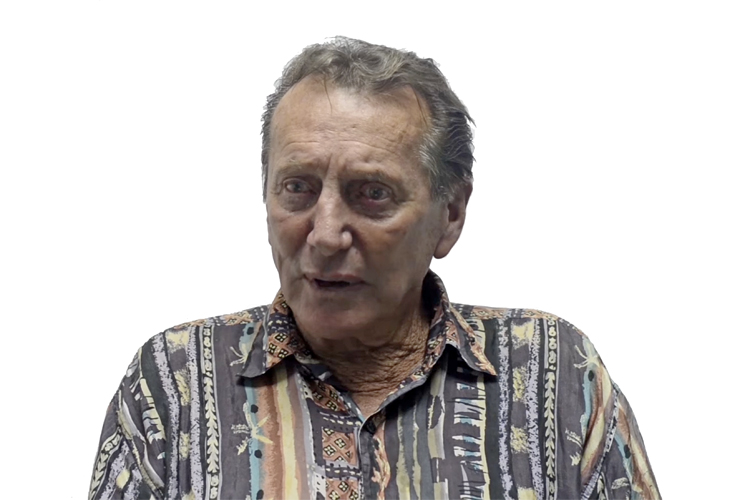
Long, Fast, and Perfect
The Pavones freight-train wave is a marvel.
When swells from the south hit the coast at the right angle, they bend and morph into a ballet of perfectly timed ripples, peeling smoothly along the shoreline.
But what makes this wave so extraordinary?
On days when the Golfo Dulce's conditions are flawless, Pavones can offer leg-burning speed rides of up to a kilometer, challenging even the most experienced surfers.
The coast requires a significant southwest swell to show its magic, and its finest hours are typically between April and August.
As the swell reaches its zenith, surfers can expect to ride through three sections at low tide:
- The fast, high line dominated by regulars and expats;
- A thrilling hollow racetrack;
- A slower inside point perfect for longboard surfing maneuvers;
At high tide, the long and warm left-hander peels over a gentle cobble and sand bottom for hundreds of yards.
"Forget about paddling back against the strong current," Greg Gordon, founder of a local surf travel company, once noted.
"Most just follow a beachside path back to the river mouth and then paddle across it to make it back to the peak."
On its finest moments, Costa Rica's surfing gem can get quite crowded.
"On larger days, there may be 80 people out, but the swift current quickly separates the crowd, and the best surfers know exactly when to paddle for the horizon to catch the waves that line up the best."
"More than just great surfing, however, Pavones is the full sensual experience. It serves up a feast of sights, sounds, and feelings."
However, interestingly, its extreme sensitivity makes it quite inconsistent.
Beyond Pavones, the region is speckled with other enticing surf breaks.
Playa Zancudo offers a beach break experience in the inlet, while Punta Banco to the south of Pavones promises consistent waves.
Adventurous souls will find numerous beaches and reefs awaiting their discovery, especially when Pavones itself takes a breather.
In 2011, professional windsurfer Robby Naish rode a stand-up paddleboard at the Costa Rican surf break for two minutes and 15 seconds, meaning 0.67 miles (1.08 kilometers).
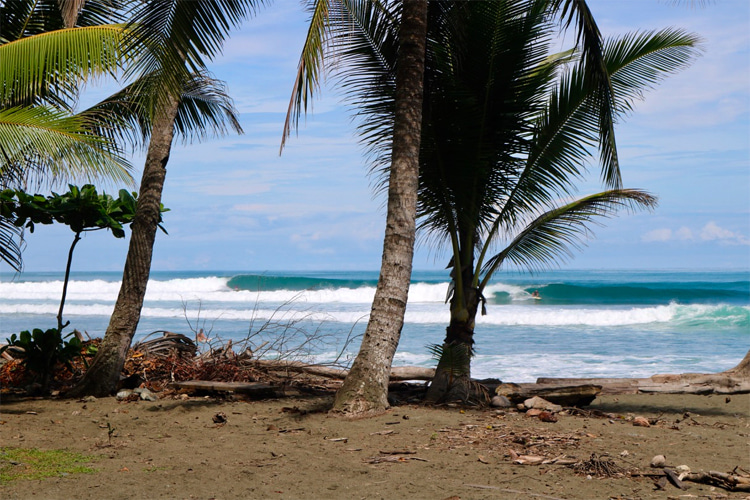
Surfing in Tropical Weather
Pavones, true to its tropical nature, is a dance between rain and shine, hot and humid days.
The mornings often present the best surfing conditions, with winds rolling down from the hills, crafting the waves into pristine, glassy lines.
"When the sun warms up the land, the wind switches onshore, and the heat rises to create rainstorms that hit or miss for the rest of the day and into the evening," adds Gordon.
"The accompanying lighting and wind can make it sketchy staying out in the lineup."
As the sun takes over, it can usher in unpredictable rainstorms and, occasionally, electric displays of lightning.
Surfers beware: these electric spectacles might make for an awe-inspiring backdrop, but they can render the waters treacherous.
Navigating Pavones
The journey to Pavones is half the adventure. Roads, particularly in the rainy season, pose their own set of challenges.
Stories of surfers navigating river crossings and getting stuck aren't uncommon.
However, as many seasoned travelers will attest, such mishaps often lead to unexpected joys, like catching the best waves of the trip during an unplanned extended stay.
You could probably fly to Golfito airport and drive for two hours to the end of the road via primitive roads and sketchy river crossings.
Alternatively, take the daily four-to-five-hour bus between Golfito and Pavones.
Pavones, Costa Rica | ID and X-Ray
Location: Pavones, Punta Arenas, Costa Rica
Type of Wave: Left-Hand Point Break
Length: 1,000+ yards (1,000 meters)
Best Swell Direction: S-SW
Best Wave Size: 4-8 Feet
Best Wind Direction: E-NE
Best Tide: All Tides
Best Time to Surf: Rainy Season (April-August)
Skill Level: Intermediate and Advanced
Best Board: Shortboard, Longboard
Crowd: Average
Water Quality: Good
Hazards: Crowd
Bottom: Cobblestones, Sand
Water Temperature: 80-88 °F (26-31 °C)
Getting There: Paddle-out
